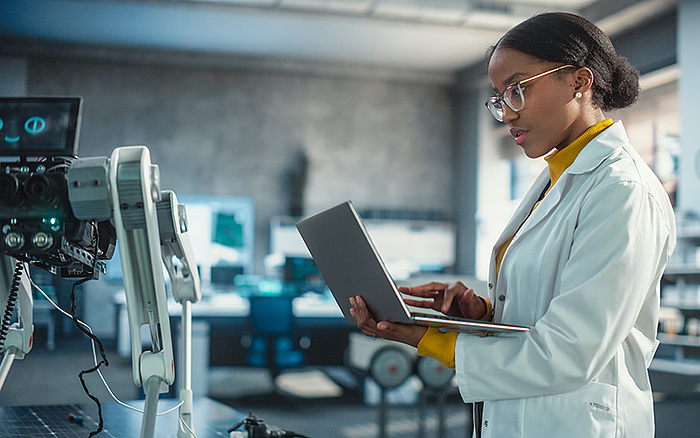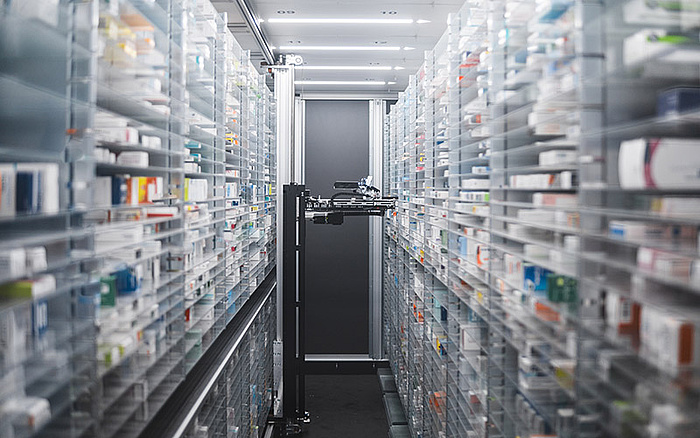
IP trends in the pharmaceutical industry
The pharmaceutical industry has long relied on Intellectual Property (IP) protections in the pursuit of better, more accessible healthcare solutions. However, with the rise of artificial intelligence (AI) and other disruptive technologies, the sector faces new challenges: navigating data ownership, patent exclusivity and stringent regulatory requirements in a landscape where the boundaries of monopoly rights are being tested.
IP evolutions in this industry are hardly new: Dennemeyer's research has found that annual patent applications relating to personalized medicine grew 2,000% between 2000 and 2017. Now, due to the rapidly expanding role of AI in diagnostics, treatment and disease analysis, patents are poised to become even more critical tools for safeguarding pharmaceutical innovations into the future.
Our latest IP Trend Monitor study found evidence to support this increased emphasis on patents.
The prospects and expectations of AI patents
A convincing 66% of IP-industry panelists agreed or strongly agreed that the use of AI in drug discovery will increase the patenting of drug candidates generated by computer models. It is clear that such automated processes are neither an "if" nor a "when" but a "now." The expanded efficiency they bring to an industry facing skill shortages and supply chain issues is non-optional — but with this advantage comes new hurdles.
It is no surprise then that 69% said AI will result in IP challenges related to data ownership, and 60% anticipate challenges in identifying true inventors. This indicates that AI is expected to complicate the understanding of IP ownership and accreditation, adding new legal complexity to a space that is already competitive and closely controlled.

Courts around the world have affirmed that AI systems cannot hold IP rights. Therefore, to ensure proper recognition for drug researchers, it is essential to be able to separate their discoveries and inventive steps from any contribution made by an AI.
For example, regulatory exclusivity offered by the United States Food and Drug Administration (FDA) is a period during which competing generic drugs will not be approved by the government body. This breathing room is separate from, and potentially concurrent with, patent protection but does not last nearly as long as the latter's 25-year maximum (including supplemental extension). With AI potentially speeding up the drug development process, the implications of enforced exclusivity and its impact on consumers will likely become a topic of debate.
Disagreements on cooperation
In light of this uncertainty, 35% of panelists agreed or strongly agreed that the use of AI is likely to encourage pharmaceutical collaboration; trademark specialists were more convinced at 45%. However, a majority of respondents either disagreed with the statement or remained neutral, suggesting that the role of AI may be more divisive than unifying when it comes to competitive dynamics. This, in turn, could further fragment an industry where consumers are already obliged to make difficult — and often onerously expensive — decisions.
When asked how pharmaceutical companies should balance the need for IP protection with ensuring affordable access to life-saving medications, respondents were split between:
- Investing in open innovation and public-private partnerships (49%)
- Leveraging compulsory licensing in certain cases (46%)
- Implementing tiered pricing based on income levels (33%)
Only 8% indicated that relying on traditional patent exclusivity was the best course of action. This not only suggests a growing need for pharmaceutical companies to embrace new cost-control methods but also emphasizes a demand for patent laws that more nimbly address the needs and exploit the benefits of an AI-driven world.
Market presence and oversight
Emergence of biotech startups
The advent of AI-driven drug discovery has catalyzed the formation of research companies focused on using the latest computer science to produce new therapies. Innovative players like Insilico Medicine and Recursion Pharmaceuticals exemplify the intersection of AI and pharmaceuticals, highlighting the potential for the industry to reduce the time and expense of drug development.

Every new market-ready drug results from screening thousands of candidate substances. New AI-based approaches could help reduce that pool, speeding up development by allowing researchers to focus on a much smaller selection.
Regulatory evolution
Governing bodies worldwide recognize the need to adapt in the face of AI's effect on healthcare and are moving quickly. For example, the European Medicines Agency (EMA) and the Heads of Medicines Agencies (HMAs) have published a workplan, effective until 2028, to help national competent authorities in the European Economic Area coordinate their approaches to AI in medicine.
Ultimately, making the most of potential benefits while minimizing risks to patients and stakeholders is the goal for the entire industry. Any and all subsequent regulatory changes will further underscore the necessity of IP strategies that align with evolving compliance requirements and pharmaceutical standards.
IP and AI trends in action
To make these industry movements more actionable, we will examine how our survey data plays out in actual pharmaceutical cases:
The ongoing importance of patent specificity
In late 2023, the Federal Trade Commission (FTC) challenged more than 100 drug product patents for improper listing on the so-called "Orange Book." Otherwise known as the "Approved Drug Products with Therapeutic Equivalence Evaluations," the catalog published by the FDA lists those medications considered safe for their intended use.
Relevant patents may be attached to listings for reference and to alert competitors to the IP coverage. That being the case, problems arise when patents are improperly associated with medicines in the Orange Book since contesting this attachment can trigger a 30-month block against competing products, including generic drugs. Thus, the misuse of patents in this way can greatly impact the market, ultimately reducing consumer access to affordable medical products.
As AI enables the faster development of more numerous products, pharmaceutical companies will need efficient methods of drafting and vetting patent claims, meeting regulatory requirements and accounting for an expanding web of legal considerations.
The future of an AI-powered pharmaceutical market
Integrating AI into critical processes enables pharmaceutical companies to move more quickly than ever, but access to this technology may be restricted by finances, digital skills or strategic flexibility. Consequently, companies with the most revenue will likely be the first to master AI implementation, and this, in turn, will position those larger or better-funded businesses to stifle innovation from less technical organizations already at a speed disadvantage.
One realization of this may come in the form of "strategic patenting," often seen as an effort to keep competitors from introducing alternatives that help balance prices. Strategic patenting is only made easier when AI hastens turnover. In this scenario, AI becomes a tool for monopolizing the market, not a path toward equitable access to innovation and legal protection.

Given that a drug-discovery AI could reveal large numbers of functionally similar substances alongside an approved medication, competitors may find themselves blockaded by patents, cut off from the usual "invent-around" solution.
Practically speaking, concerns around the "unfair" utilization of AI may not come to fruition until consumers are directly impacted by a more limited market. This could be as much the spark of litigation as of new regulations, which means pharmaceutical companies should think beyond the immediate when implementing their AI strategies.
The basis of patent law
As disruptive as AI has already proved to be in pharmaceutical R&D, the resulting shockwaves will hardly stay confined to this sector. The impact will also be felt in patent law and its applications.
For example, pharmaceutical patents on manufacturing methods are already a point of contention and are likely to become thornier as AI transforms the environment. Meanwhile, the very definition of patentable subject matter may have to be adjusted in response to explosive change. For instance, should the criterion of non-obviousness remain the same once the use of AI becomes commonplace — and how might the ramifications of this decision look either way?
IP laws are more than likely to be amended or updated in answer to AI advances, leaving inventors in every industry with the need to navigate fast-changing questions about ownership and creativity.
What comes next for pharmaceutical companies?
As of now, there is no single "correct" way to implement AI; after all, by their very definition, disruptive technologies have no precedent. Be that as it may, based on case studies from across the sector and the findings of our IP Trend Monitor study, pharmaceuticals reflect a growing emphasis on AI-powered R&D. For industry players, there is no more time left to wait and see, and they must enact an assured IP strategy that can accommodate and leverage the strengths of this new paradigm while deflecting its latent harms.
The growing value of IP protection is best appreciated across multiple industries. To learn more, download your copy of the IP Trend Monitor 2023 study.
Filed in

How accurate were past forecasts about IP in 2025? We revisit the EPO's 2007 study, exploring its boldest scenario where public funding and open access challenge the patent system.



